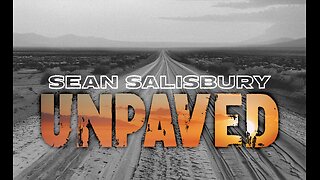Premium Only Content

The challenge and dangers of redesigns
Bo Sacks distributed an article the other day about the need to refresh your design if it hasn't been updated in a while. The article is mostly about print, but the same can apply to a website.
Designers amaze me. They can tweak one little thing — a color here, a font there — and make something look so much better.
I don’t have that talent. If men still wore ties to work, I’d want Jeeves to help me choose mine.
Looking modern is often a good idea. I remember evaluating some vendor software that looked like 1990 – it was 2010 at the time – and fighting the impression that it was old technology simply because of the interface.
But as I mentioned before, when someone makes a claim, I instinctively think about things that might disconfirm that claim. It’s just the way my brain works.
Following that thought, are there any negatives, or dangers in updating your design? Yes, actually.
The first is simply resistance to change. Change can be uncomfortable, and a sudden change can be disorienting. That might argue for slow, incremental changes rather than wholesale changes.
The second is you might be in a niche where old-fashioned is part of your brand. Looking too modern might make people think you’ve abandoned your traditional, long-time values.
The third is that a prettier, more modern design doesn’t necessarily mean a better user experience.
When I started out in publishing, I saw a box of direct mail pieces sitting outside the marketing director’s office. I picked one up to take a look. I knew almost nothing about publishing back then, and even though I was in editorial, I was curious about everything, including marketing.
I’d never seen an uglier marketing piece. The colors and the design were awful (not that I’m an expert on either of those things, by the way), and the pictures and the type face looked like they were from 1950.
When I asked the marketing director why we sent such an ugly thing, she said she agreed that it was ugly, and it was personally embarrassing, but it out-performed every attempt to replace it. They’d do split tests of the ugly mailer against nicer designs, and the ugly one always won.
I mentioned this to my friend Leslie Laredo, and she asked if there could be some confusion here over correlation and cause. For example, it would be wrong to conclude “ugly = better.” In fact, it would be wrong to conclude that we knew why the ugly brochure worked better. But A/B tests are fairly reliable, and in this case, the uglier design always prevailed. The why was unclear, but the fact was pretty well established.
Back to the article. Peter Sands, who is making the case for occasional redesigns recognizes what I’m talking about. It’s not enough for the designer to like the new design. The readers have to like it.
So whenever you do a redesign, you have to have a method in place to test it and make sure it’s helping you. The bare fact that it looks nicer isn’t enough. It has to sell more, keep people on the page longer, get visitors to read more articles, reduce customer service calls, or just make people feel better about it. But you need some metrics.
Sources
=======
Does your newspaper look tired and out-of-date?
https://www.inpublishing.co.uk/articles/does-your-newspaper-look-tired-and-out-of-date-21830
-
 DVR
DVR
Nerdrotic
3 hours ago $1.18 earnedNerdrotic Nooner 509
9.8K -
 1:48:16
1:48:16
Tucker Carlson
2 hours agoCliffe Knechtle Answers Tough Questions About the Bible, Demons, Israel, Judas, Free Will, and Death
47K84 -
 LIVE
LIVE
Viss
3 hours ago🔴LIVE - How To Winner Winner Chicken Dinner! - PUBG
190 watching -
 1:00:41
1:00:41
Timcast
3 hours agoTrump MOBILIZING National Guard In NATIONWIDE Crackdown
122K130 -
 1:06:02
1:06:02
Sean Unpaved
2 hours agoQuarterbacks, Coaches, & Contracts: Sanders' Draft Drama, Meyer vs. Harbaugh, & McLaurin's Big Deal
14.9K -
 2:11:45
2:11:45
Steven Crowder
5 hours agoDonald Trump Vs American Crime: Chicago is Next & Libs Are Freaking Out
299K267 -
 41:08
41:08
Grant Stinchfield
2 hours ago $1.49 earnedDemocrats Try to Turn California Into Predator Playground with Proposed "Child Predator Dream Bill"
16.7K2 -
 1:21:06
1:21:06
Rebel News
2 hours agoCdn troops in Ukraine? Poilievre backs self-defence, Hamas thugs cancel Ottawa Pride | Rebel Roundup
18.3K19 -
 24:58
24:58
Neil McCoy-Ward
2 hours ago⚠️ OUTRAGE! What They Just Announced For YOUR HOME!!! 🚨
18.4K11 -
 LIVE
LIVE
IrishBreakdown
4 hours agoNotre Dame and Miami Set To Reignite Intense Rivalry
292 watching